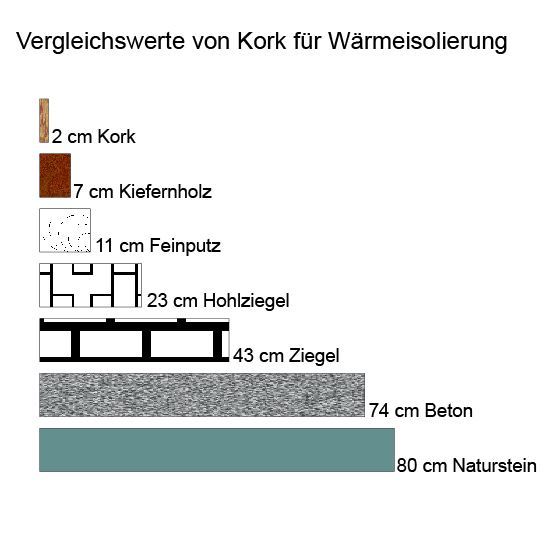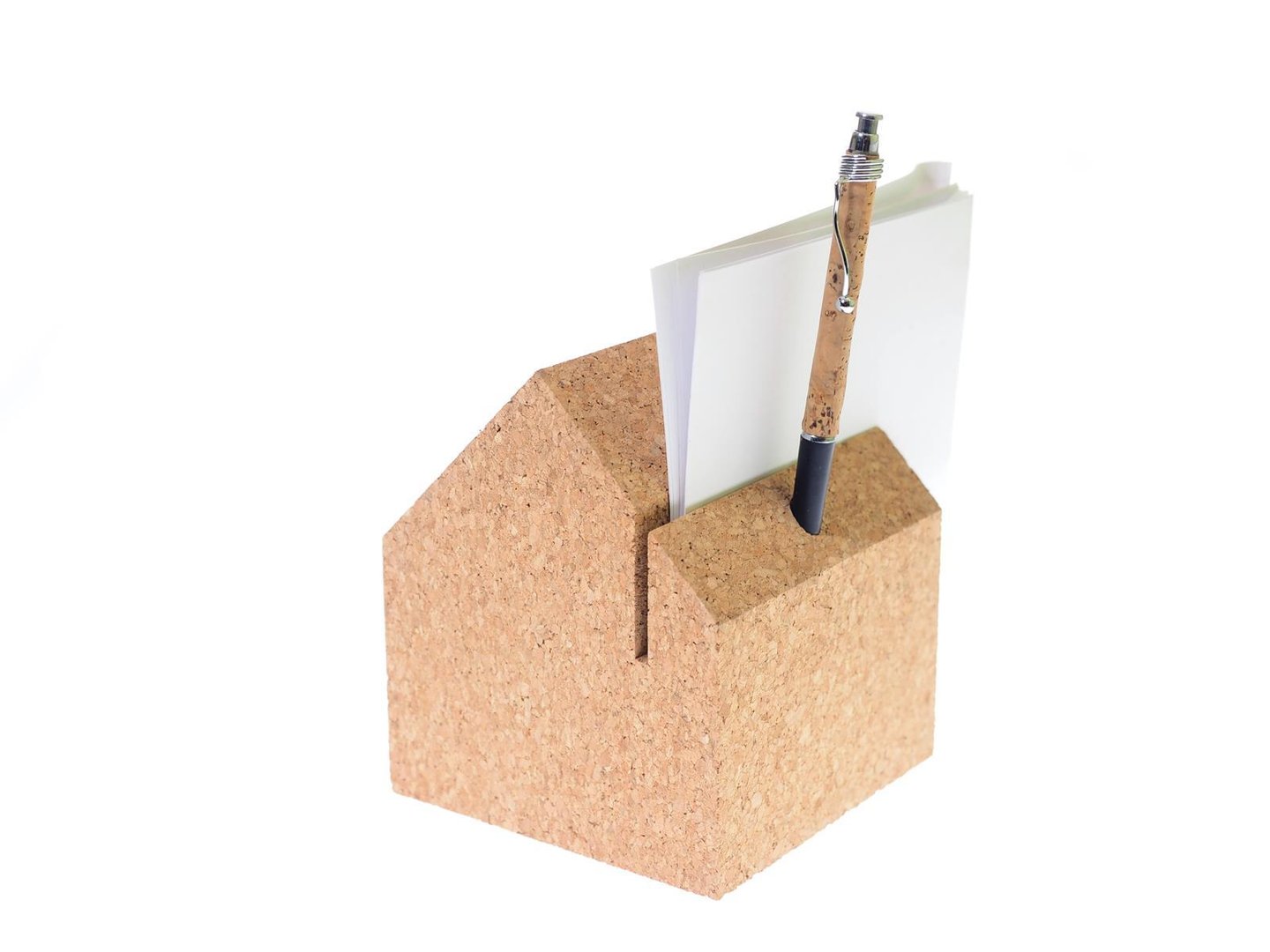Technical information about cork
We advise you on your cork project. Here you will find important information sheets on the processing and care of cork products and roll cork. As cork experts, we are also happy to advise you directly! Contact us via info@korkie.de or via our contact form.
Care instructions
Instructions for the care of cork products, articles made of cork and cork flooring.
Care of textile cork (bags, purses, hats, ties, belts, cases, etc.)
The care of cork textiles is very simple.
They are to be hand washed at 30 ° C warm water. Use only mild detergent or bar soap.
It is often sufficient to wipe the cork textiles damp with a cloth dipped in soapy water.
You can also iron cork textiles.
Set the iron to the lowest temperature setting and place a damp cloth or tissue paper on the item to be ironed.
Cork is a natural product, so differences in colour and structure are a typical feature.
Care of cork (granulated)
Granulated cork products
Objects made of granulated cork, such as placemats, coasters or trays, can be cleaned with a damp cloth and washing-up liquid if necessary, after which they should be left to dry.
To prevent soiling from the outset, you can treat the objects with wax or oil before using them for the first time. Beeswax has proved its worth!
Do not treat trivets with wax or oil! If they become a little unsightly after a few years, you can simply sand them down or order some new ones from us!
Care of cork floor coverings
Cork floors do not usually need much care, but good care always means a long life and a good appearance. Normal maintenance cleaning such as sweeping, vacuuming or mopping is sufficient. Every 4 weeks you can treat the floor with a care product. This protects the surface treatment and of course the floor. When choosing the various products, you should only use care products that are precisely matched to the floor.
Sealed cork floors are cleaned of dirt with a pH-neutral basic cleaner. Afterwards, the care product can be applied. This keeps the seal supple and additionally protects the floor. Polishing is not necessary.
Waxed cork floors are cleaned in the same way as other cork floors, except that you choose a care product that has been developed for hard wax cork floors.
Processing and laying instructions for roll cork
Compliance with the installation instructions is decisive for the durability as well as for any warranty claims. Mechanical damage to the surface and damage caused by moisture are generally excluded from the warranty. Please check the roll cork for any damage before installation. Differences in colour and structure are natural and therefore no reason for complaint.
Before laying:
Roll cork should be adjusted to the room climate for approx. 24 hours before installation. To do this, simply place the cork with packaging in the room to be laid.
Preparation:
Gluing roll cork is really easy with a little manual skill. Please use the right tools for the work ahead. In addition to the right tools, the preparation of the surface is also very important. It is best to mark the surface beforehand and mask it with masking tape. The roller cork should be glued over the entire surface. The surface must be clean, dust-free, dry and even. Any unevenness, dirt, etc. must be removed, otherwise the result will suffer.
Tools:
Gluing:
The room temperature should be at least 18 ⁰C, the air humidity approx. 50 - 60%. It is advisable to prime the surface before gluing. You can use a simple, commercially available deep primer for this purpose. As soon as this has dried, the cork adhesive can be applied to the substrate with a roller. As soon as you have cut the roll cork to the desired size with a knife, stop rail and angle, you can also apply the adhesive here. Please note that the adhesive is only applied to the desired area! Glue stains must be removed immediately with a damp cloth. Please make sure that the cork adhesive does not come into contact with water in general. The cork adhesive needs a drying time (see processing instructions on the adhesive bucket). As soon as the adhesive has dried completely transparent on the cork and the substrate, you can now start gluing.
Please now roll the cork onto the adhesive surface and press it lightly. A correction is no longer possible after the two adhesive surfaces have touched.
Please make absolutely sure that the adhesive side of the roller cork does not touch, because they stick immediately!
After you have laid out the surface with the cork, please stroke over it once more with the palm of your hand. The pin board can now be used immediately.
We wish you good success and much joy!
Technical leaflets

Contact adhesive:
Technical Data Contact Adhesive (German).pdf
Safety Instructions Cork Glue (German).pdf
Cork flooring:
Cork flooring data (German)
Roll cork and cork boards
Technical data roll cork and cork boards (German)
Processing Beeswax Balm
Suitable for: Wood, cork and antique wooden objects (furniture, frames, carvings).
BEESWAX BALM has an antistatic effect and provides protection against moisture and dirt. As a surface finish, it gives the treated objects a well-groomed appearance.
BEESWAX BALM is also ideal for touching up wood preservative varnishes and dull painted surfaces.
Application/Processing:
- The substrate must be clean without residue.
- Working temperature from + 8 °C. Wood moisture not above 18 %. Air humidity < 60%.
- Apply a thin layer of BIENENWACHS-BALSAM evenly with a brush or non-fibrous cloth. Even when thickened, still apply with a brush;
- After approx. 15 - 30 min. wipe off excess balm with a soft cloth in the direction of the grain.
- For a slightly shiny surface, repolish after 3 - 4 hours;
- A second treatment as described makes the surface richer;
Consumption*: Approx. 60 - 70 ml/m², i.e. 1 litre of BIENENWACHS-BALSAM is sufficient for approx. 15 m² per application. The exact quantity can be determined in a trial test.
Cleaning: Clean the tools with SPECIAL CONDENSATION or turpentine.
Storage: Cool but frost-free. Shelf life 5 years in unopened containers. Decant opened containers into smaller, suitable containers, seal airtight and use up soon;
Ingredients: Isoaliphates, beeswax, carnauba wax, candelilla wax, micro wax.
Important notes: Ventilate sufficiently during processing. Cold causes thickening. We recommend wearing suitable gloves (nitrile) during processing.




